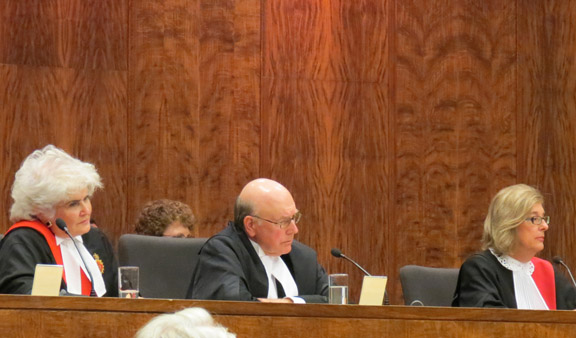In light of Ontario Superior Court Justice David Brown’s comments earlier this year regarding the court’s “antiquated, wholly-inadequate document management system,” the province’s three chief justices at this year’s annual Opening of the Courts of Ontario ceremony took a more optimistic view.

Ontario Superior Court Chief Justice Heather Smith highlighted the progress that has been made in the last year regarding the use of electronic documents.
She mentioned the pilot project that aims to allow parties to file electronic documents with the court. The commercial list judges who led the project recently established
guidelines for creating acceptable electronic court documents.
“In my view, these comprehensive guidelines have just set the ‘benchmark’ for electronic document standards,” she said. “I am certain that they will be the standard for a true e-filing system for all court documents in the future.”
The guidelines will also benefit the Divisional Court branch of the Superior Court, said Smith, since parties have been required to submit an electronic version of certain documents for a while now.
In Brown’s mind, the current state of the court’s document management system needs an extreme overhaul. In the March 14 ruling
Romspen Investment Corp. v. 6176666 Canada Ltée., Brown unleashed his frustration regarding the lack of technology in Ontario courts.
“I suppose that on a sunny, unusually warm, mid-March day one should be mellow and accept, without complaint, the systemic failures and delay of this court’s document management system,” he wrote.
“The real solution? Consign our paper-based document management system to the scrap heap of history and equip this court with a modern, electronic document system,” he suggested.
“Yes, Virginia, somewhere, someone one must have created such a system, and perhaps some time, in an another decade or so, rumours of such a possibility may waft into the paper-strewn corridors of the Court Services Division of the Ministry of the Attorney General and a slow awakening may occur,” Brown further quipped.
Ontario Court Chief Justice Annemarie Bonkalo took the opportunity during the Sept. 12 ceremony to acknowledge the technological inroads that her court has made in the last year.
“From bail hearings, to witness testimony, to pretrials — judges and justices of the peace are using video and telephones for remote appearances,” she told the audience, which included judges from all three Ontario courts and various legal dignitaries.
She also noted that the court is updating the way it communicates to the public. “Over the past year, we have developed new procedural guides for unrepresented litigants using our family, criminal, and provincial offences courts,” she said. “Our web site has been updated, and the content enhanced to more widely open our ‘virtual doors’ to the public.”

 Ontario Superior Court Chief Justice Heather Smith highlighted the progress that has been made in the last year regarding the use of electronic documents.
Ontario Superior Court Chief Justice Heather Smith highlighted the progress that has been made in the last year regarding the use of electronic documents.